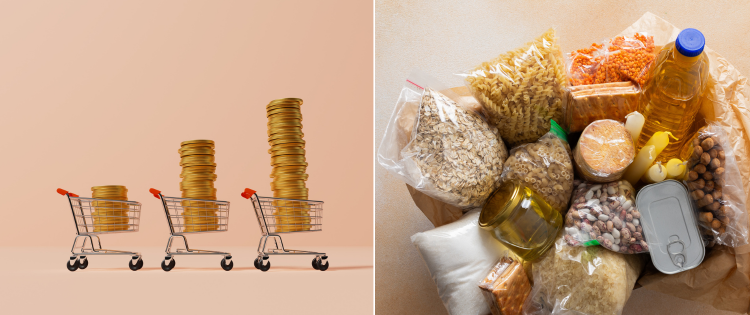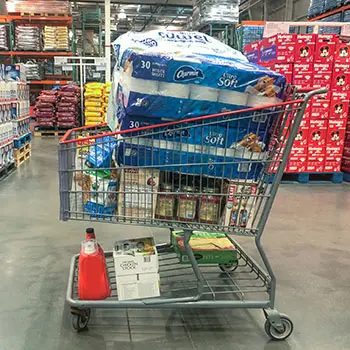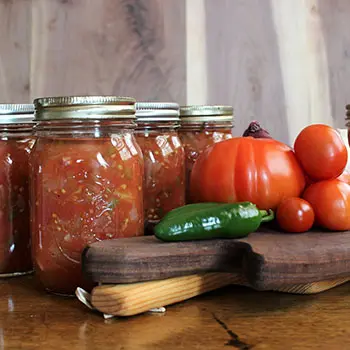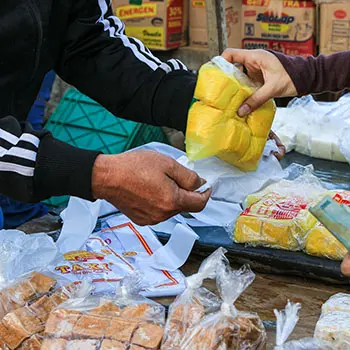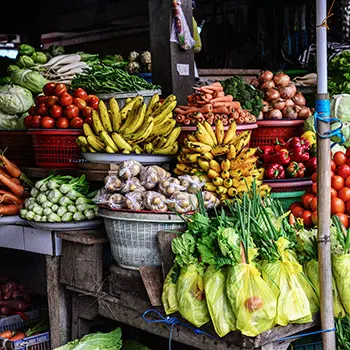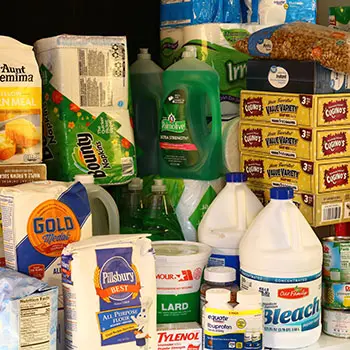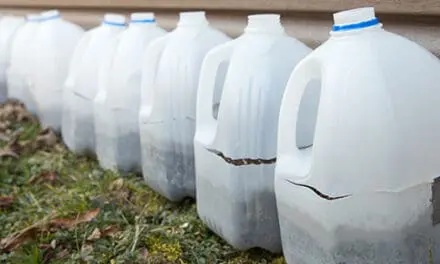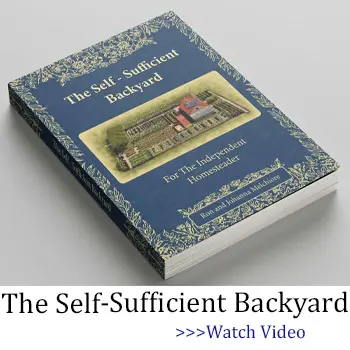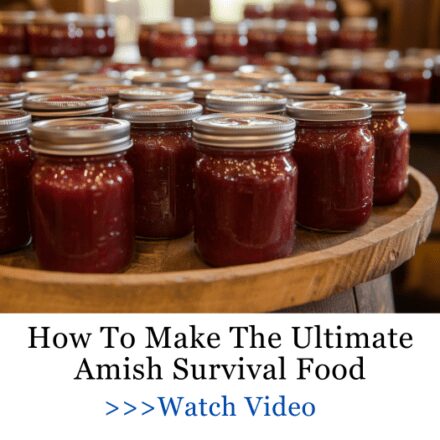Recent economic reports confirm what we’re all feeling at the checkout—inflation is steadily driving up the cost of everyday items. Let’s talk about how to stock up on essentials despite inflation.
A year ago, filling a basic shopping cart cost $100; today, the same items are nearing $150. Rising costs for seeds, animal feed, and equipment maintenance only add to the strain.
In these challenging times, I’ve discovered effective stockpiling strategies to help offset rising expenses. These methods are simple, time-tested, and refined to help you build a resilient stockpile without overspending.
Stock Up on Essentials That Last Longer
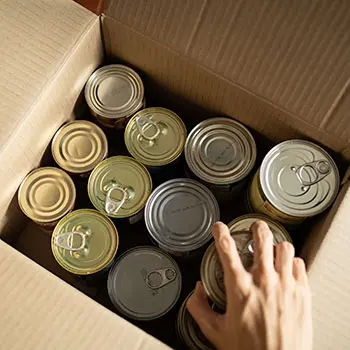
The foundation of any solid stockpiling strategy starts with understanding which essentials truly deliver long-term value. Dried legumes like lentils, split peas, and various beans have become cornerstone items in my storage system, lasting up to five years when properly stored in airtight containers with oxygen absorbers. These protein-rich foods cost a fraction of meat while delivering outstanding nutritional value.
Whole grains have proven equally valuable in my stockpile. Beyond basic white rice, I maintain substantial quantities of quinoa, buckwheat, and rolled oats.
These grains provide diverse nutritional profiles and remarkable versatility in meal preparation. I store them in food-grade 5-gallon buckets with gamma seal lids, which has effectively prevented pest infiltration and moisture damage. Through careful rotation and monitoring, I’ve maintained these staples for extended periods without any loss in quality.
Canned goods form another crucial component of long-term storage. While many focus solely on vegetables and fruits, I’ve found that canned meats like tuna, chicken, and salmon offer exceptional value.
These protein sources remain stable for 3-5 years and require no additional preparation or energy for storage. During recent price spikes, having these alternatives readily available saved me considerable money compared to fresh meat purchases.
Don’t Forget About Your Health
Inflation doesn’t just affect groceries; it also drives up the cost of medications and medical care. In tough times, access to medical care can be one of the first things to disappear. Imagine needing antibiotics or wound care and not being able to get them.
This trusted doctor-written guide can teach you how to manage most medical situations on your own. It also shows a clever way to stockpile antibiotics while you still can. Don’t let a lack of preparation put your family at risk.
Buy in Bulk Strategically 
Through managing a large family’s needs, I’ve mastered the art of bulk buying during inflation. Restaurant supply stores have become my secret weapon – their 50-pound bags of flour typically cost 40% less per pound than supermarket options.
During my weekly shopping rounds, I’ve developed relationships with store managers who alert me to upcoming price increases, letting me stock up before new pricing hits. Last month, this insider knowledge helped me save nearly $200 on bulk purchases of cooking oil and rice.
Storage solutions make or break-bulk buying success. My basement now houses a sophisticated rotation system using commercial-grade shelving and airtight containers.
I’ve learned that investing in proper storage equipment actually saves money – my first attempt at bulk storage failed miserably when weevils invaded poorly sealed grain containers.
Now, I use Mylar bags with oxygen absorbers for dry goods, gamma-seal buckets for frequently accessed items, and dedicated chest freezers for bulk meat purchases when prices drop.
Grow and Preserve Your Own Food to Stock Up on Essentials

Starting with just a small backyard garden, I’ve expanded to a productive food-growing operation that significantly offsets grocery costs. Root vegetables like potatoes, carrots, and onions form the backbone of my garden plan because they store well without requiring complex preservation methods.
My cold storage room maintains these crops at optimal temperature and humidity levels, letting me store hundreds of pounds of produce through winter months.
Food preservation has evolved into a year-round activity in my household. Water bath canning handles acidic foods like tomatoes and pickles, while pressure canning lets me safely preserve low-acid vegetables and meats. I’ve found that investing in quality equipment pays dividends – my All-American pressure canner has processed thousands of jars without requiring replacement parts.
Dehydrating has become another cornerstone of my preservation strategy, particularly for herbs and fruits. Using a commercial-grade dehydrator, I process seasonal abundance into shelf-stable forms that maintain nutritional value while taking minimal storage space.
If you think your current food storage is secure, think again. In a crisis, your usual methods might fail. That’s why I turned to a resource that shows how to preserve food for long-term survival. This guide reveals forgotten techniques for storing food safely, even when refrigeration or canning isn’t an option.
Prioritize Bartering and Community Support 
My local bartering network started small – just trading extra tomatoes for a neighbor’s eggs. It’s grown into a robust system connecting over twenty households.
We use a private social media group to post available items and coordinate exchanges. The key to successful bartering lies in understanding relative values.
Fresh eggs typically trade one-for-one with mason jars of home-canned vegetables, while homemade bread usually exchanges for about two pounds of fresh produce.
Building community connections goes beyond simple trades. Our neighborhood bulk-buying cooperative pools resources to purchase directly from local farmers and distributors.
Last season, we secured grass-fed beef at $3.50 per pound by purchasing entire cows and splitting them between families. Similar arrangements with local orchards and vegetable farms have reduced our collective food costs by nearly 40% compared to retail prices.
Learn to Make and Stock Up on Essentials at Home
Making household essentials has revolutionized my approach to inflation-proofing our home. My laundry soap production costs $20 for a six−month supply, using washing soda, borax, and bulk−purchased castile soap.
This replaces commercial detergent that would cost roughly $120 for the same period. Beyond cleaning supplies, I produce lotion bars, lip balm, and moisturizers using bulk-purchased coconut oil, beeswax, and essential oils, cutting our personal care budget by 70%.
Food production extends far beyond basic cooking. Yogurt making saves approximately 40 monthly – my countertop setup produces two gallons weekly using milk bought on sale and reusable cultures.
Diversify Your Sources 
Price volatility makes it crucial to stock up on essentials from multiple supply channels. In my area, Asian markets consistently offer rice, soy sauce, and bulk spices at 30-50% less than supermarket prices, making them ideal for building a well-stocked pantry.
Latino grocers are another go-to for exceptional deals on dried beans, corn products, and fresh produce. To optimize savings, I’ve mapped out a monthly rotation that includes ethnic markets, discount grocers, and traditional supermarkets, leveraging each store’s strengths to stock up strategically.
Online purchasing plays an increasingly vital role in my strategy. Subscribe-and-save programs with various retailers often provide discounts on shelf-stable essentials we use frequently. Still, I always track prices closely. Several times, I’ve found that subscribe-and-save prices were higher than local retail costs.
By monitoring multiple online platforms, I’ve uncovered useful trends: Amazon usually offers better deals on personal care items, while Walmart excels in pricing for bulk dry goods. This multi-channel approach ensures I can stock up on essentials while staying within budget.
Invest in Reusable Items and Stock Up on Essentials
Converting my household to reusable alternatives has dramatically reduced ongoing expenses. Swedish dish cloths replaced paper towels, saving roughly $300 annually.
Beeswax wraps substitute for plastic wrap, while glass containers with silicone lids eliminate disposable food storage needs. The initial investment paid for itself within six months through reduced weekly shopping costs.
Multi-purpose equipment maximizes storage space and budget efficiency. My large stockpot serves for water bath canning, soup making, and brewing herbal tea concentrates.
Heavy-duty food grade buckets store dry goods, ferment vegetables, and collect garden produce. Cast iron cookware handles everything from stovetop cooking to bread baking, eliminating the need for specialized pans.
Build an Emergency Fund for Stocking Supplies 
Through careful tracking, I’ve identified that major sales cycles happen predictably throughout the year, making it the perfect opportunity to stock up on essentials. My dedicated stockpile fund, which grows by $100 monthly, allows me to make substantial purchases when prices drop significantly. This strategy paid off last winter when I secured a year’s worth of canned goods at 70% off during a store clearance event.
The fund is separate from regular grocery money and emergency savings, ensuring it’s reserved specifically for bulk purchases and deep discounts on shelf-stable essentials.
To maximize savings, I keep detailed records of price points that trigger buying decisions. For example, I stock up on pasta when it drops below 50 cents per pound or canned vegetables when they’re under 40 cents per can. This focused approach helps ensure I always have what I need at the best possible price.
When the next crisis hits, it’s not just about stockpiling essentials—it’s about how to protect what you’ve gathered. A Navy SEAL’s Bug-In Guide teaches you to plan for the worst-case scenarios, helping you fortify your home and ensure you’re ready if you ever find yourself locked down without outside help.
The last thing you want is to be unprepared when the world outside is unraveling. Don’t wait for the power to go out—learn how to protect your family and your supplies from danger now.
Reduce Dependency on Commercial Products and Stock Up on Essentials
Breaking free from commercial dependencies requires systematic replacement of store-bought items with homemade alternatives. My herb garden supplies dried seasonings, teas, and medicinal preparations that would cost hundreds at retail prices.
Basic ingredients like vinegar, baking soda, and citric acid form the foundation of nearly all our cleaning solutions. Even pet care has moved away from commercial products – our dog’s food now comes from bulk-purchased ingredients mixed at home, cutting costs while improving quality.
Why Inflation Impacts Essential Goods
Raw material shortages, rising transportation costs, and supply chain disruptions have driven up the prices of essential goods, making it more important than ever to stock up on essentials. Agricultural inputs like fertilizer and fuel directly impact food costs, while soaring packaging prices affect nearly every consumer product.
Building resilience against inflation requires a multi-faceted strategy that includes smart storage, skill development, and resource management. By stocking up on essentials and adopting this balanced approach, you can maintain household stability amidst economic uncertainties.
How to Looter Proof Your Stockpile
100+ Long Lasting Foods that Can be Stored Without Refrigeration (Video)
This Water Source Will Disappear in a Crisis

